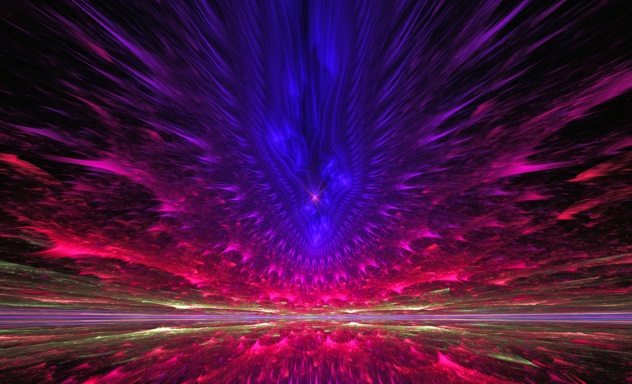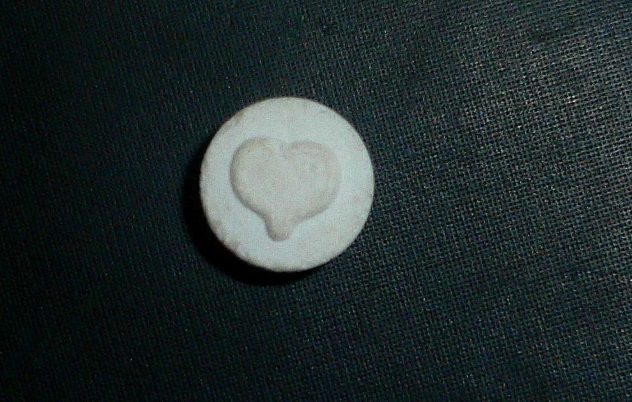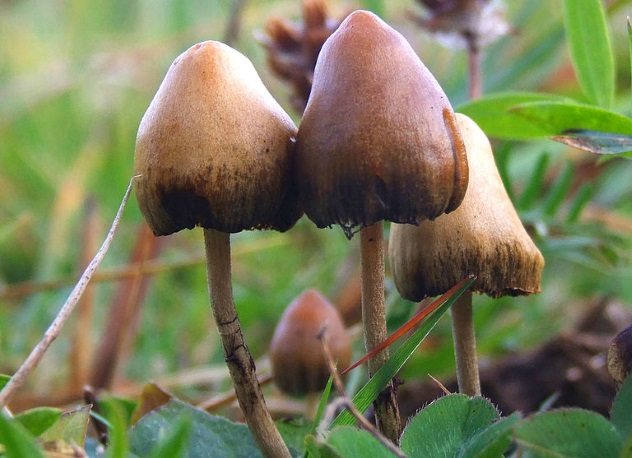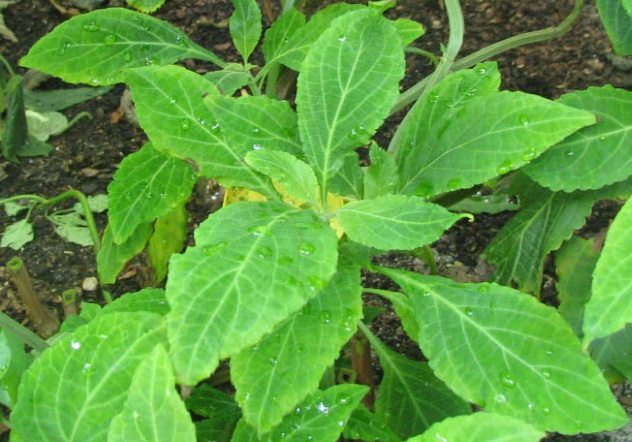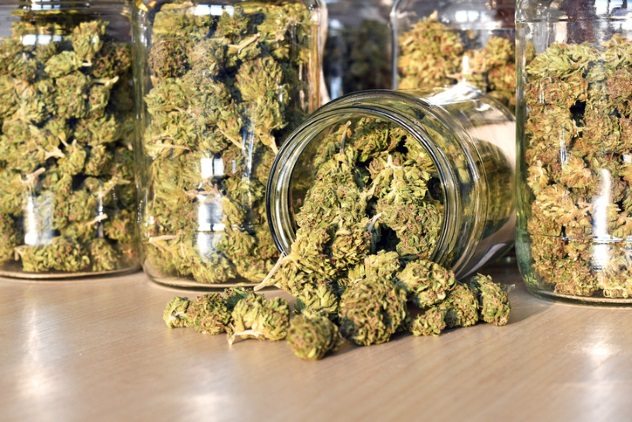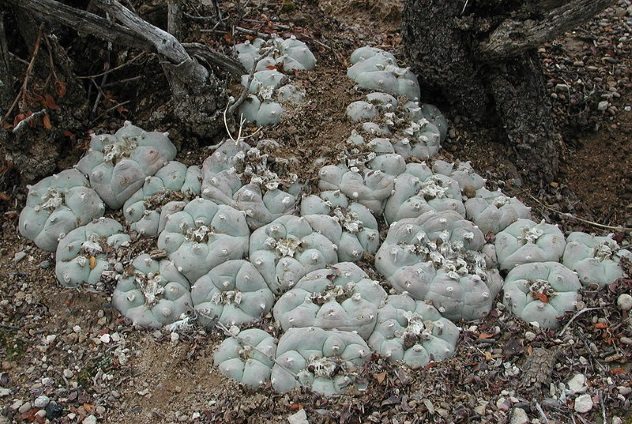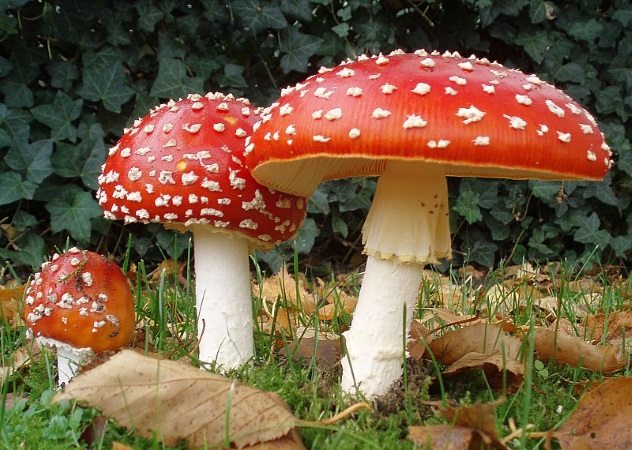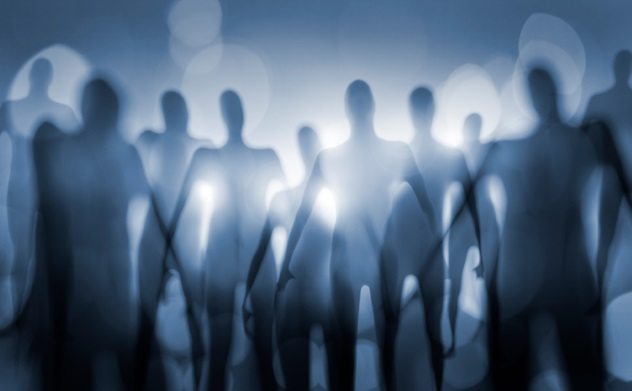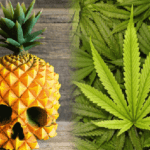Psychedelics are drugs primarily known for causing visual and auditory hallucinations and altered states of consciousness. Think of comedic movie or TV show scenes in which a character does a drug, leading to a sudden point-of-view shot where the colors become vibrant, the audio turns bizarre, faces and objects start to swirl, and perhaps sitar music is suddenly heard. The following are ten of the most fascinating psychedelic drugs.
10 LSD
Let’s start with a classic, famous for altering your perception and inducing hallucinations. It was synthesized by Albert Hofmann in 1938 and revisited in 1943, when he accidentally absorbed some though his skin. Lysergic acid diethylamide had a huge impact on the world when it started being used recreationally. Synonymous with the hippie movement, people using LSD began to opt out of their typical nine-to-five grinds and started living peaceful lives of self-discovery and Earthly love. Shortly after, the US government made it a Schedule I drug as a part of the Controlled Substances Act. LSD temporarily alters how our brain interacts with dopamine and serotonin, causing hallucinations and euphoria. It can take up to 12 hours for this anomaly to halt, which is why the high can last so long. There is also a restriction of blood flow to your default mode network, which can lead to ego-dissolution: the lack of separation between oneself and the universe.[1] Users report that this dissolving of the ego can lead to a reconnection with the self, others, and the natural world. A study done on 20 healthy volunteers found that two weeks after being administered the drug, participants showed increased levels of optimism, openness, creativity, and imagination. LSD is nonaddictive and builds a sort of self-regulating tolerance almost immediately. The risks of LSD producing psychosis are highly overstated. In fact, another study showed that US citizens who reported use of LSD at some point in their lives showed no higher risk of developing psychosis, depression, or suicidal thoughts than those who have never done the drug.
9 2C-B (Nexus)
This is an incredibly fascinating one that you probably haven’t heard of. It was first synthesized by the legendary chemist Alexander Shulgin in 1974. It has a blend of psychedelic, entactogenic, and aphrodisiac qualities. The effects include euphoria, empathy, increased insight, brightened colors, and increased sexuality. Originally, it was sold in low doses as an aphrodisiac and has since been found to be a powerful sex-enhancing drug. 2C-B works on the serotonin receptors of the brain. Specifically, it blocks the 5-HT2C receptor, which explains most of its psychedelic effects. Not enough research has been done to fully understand what actions provide the full profile of effects that this drug causes. In psychiatric studies, it has been shown to aid in the bonding between a therapist and their patient (hopefully not too much). Its use grew in the 1980s, and it was even employed by shamans in South Africa as an alternative to their traditional spiritual medicines. Due to lack of knowledge and the rare nature of Nexus, people usually encounter this drug because they intend to try it. There are reports of feeling orgasmic sensations throughout one’s entire body, even without any external stimulation. It is not neurotoxic, and tolerance resets after only six days. The only safety concern comes with the lack of information surrounding its long-term effects.[2]
8 Psilocybin Mushrooms
Shrooms, man. Hallucinogenic mushrooms have been used by humans for at least 9,000 years. First synthesized by mother nature, these naturally occurring fungi are still used today for spiritual and recreational purposes. Ethnobotanist and author Terrence Mckenna theorizes that psychedelic mushrooms played a huge role in the evolution of our species. He writes that the mind-expanding and ego-dissolving effects of the mushrooms contributed to our intellectual and conscious separation from other primates. Whether or not his claims are true, this drug’s effect on our culture is undeniably significant. The chemical found within most hallucinogenic mushrooms is psilocybin, which gets broken down into the active ingredient, psilocin. Psilocin can bond with the brain’s serotonin receptors, and it’s that overstimulation that causes hallucinations.[3] In a famous US study, 36 college-educated people were given psilocybin and then observed in a laboratory. A third called it the most significant spiritual event of their lives, with another third putting it in their top five. Two months after taking the drug, 79 percent of participants reported increased feelings of well-being and satisfaction. However, 22 percent reported feelings of fear and paranoia at some point during their trip. Like most of the drugs on this list, it is not neurotoxic or addictive and has been proven to have a low risk to both the user and to others. People experience euphoria, hallucinations, connection to nature, ego dissolution, creativity, and profound realizations. Usually, these are reported as very enjoyable, but some realizations (especially about the self) are scary. In the intoxicated state, those fears can manifest as horror and despair.
7 Salvia Divinorum
Used for centuries by the Mazatec natives in what is now Mexico, salvia is perhaps the most atypical and unusual drug on this list. First off, it isn’t an illicit substance in some states in the US. You could look a police officer in the eye while you publicly smoke it just like you would a cigarette. It affects the brain in such an unusual and unique way that even the DEA doesn’t understand it enough to make it illegal nationwide. The psychoactive chemical in Salvia divinorum, salvinorin A, is the most potent naturally occurring psychedelic known to humankind. While most psychedelics bond to several neural receptors, salvia bonds to only one, the kappa-opioid receptor. This causes the levels of dopamine in your brain to drop significantly, which, instead of making you sad, causes a distinct and unavoidable separation from the self. Users report being sucked backward out of this world and into another one, where you don’t exist, and you (the egoic self) aren’t there to experience it. Unlike the geometric patterns people report seeing on LSD, when you smoke salvia, you become the geometric patterns.
6 MDMA (Ecstasy)
One of the most popular drugs on this list because of its use in the rave and party scene, MDMA is also one of the more potentially harmful substances featured here. The market for this drug is huge, with an estimated two million pills being smuggled into the US every day. It was first synthesized in 1912 but wasn’t fully explored until the 1970s, when Alexander Shulgin (remember him?) introduced it to the field of psychotherapy. Just like 2C-B, it was found to help patients open up and build stronger rapport with their therapist. Its less catchy chemical name is 3,4-Methylenedioxymethamphetamine. This one doesn’t just affect your serotonin receptors like the other ones listed do; it blasts them to a whole new world. The euphoria is unbelievable, but it comes at a price. When you come down, your serotonin levels are much lower than normal. This can lead to feelings of tiredness, irritability, and bouts of depression. It can take up to a full month for the serotonin production to return to normal levels, meaning frequent use can lead to permanent brain damage. Sadly, people are often sold MDMA cut with fillers like caffeine and even meth. All the substances on this list should be tested before use, but it’s especially important with this one. Although the infamous ecstasy comedown can still occur with the pure substance, it’s often so harsh because the user was also unknowingly coming down from meth. The psychedelic effects are mild at low doses, with limited or no hallucinations. Users report the intense euphoria mentioned above, along with feelings of excitement and huge empathy for those around them.[5]
5 Marijuana
Though not quite a psychedelic at typical dosages, this toker’s delight can be a hallucinogen when done in higher quantities.[6] Human beings have been getting stoned for millennia, and with new legalization in some states, cannabis has seen a huge rise in use over recent years. The effects of marijuana on the brain are brought on by the chemical tetrahydrocannabinol, or THC. This causes your thoughts, imagination, and perception to magnify themselves. Your trains of thought feel far more significant and profound than normal, which leads you to, for example, think that a toaster with a built-in microwave is the best idea you’ve ever had. THC also affects your brain’s levels of dopamine and norepinephrine, often leading to feelings of euphoria, relaxation, pain management, and enhancement of overall experience. However, this can sometimes lead to anxiety and paranoia.
4 Peyote
Native Americans have used this naturally occurring cactus as a spiritual aid for thousands of years.[7] They continued to do so until the mid-20th century, when racist propaganda condemning peyote caused fear among US citizens. It was made federally illegal soon after. In 1993, the Clinton administration passed a law allowing the consumption of the peyote cactus during religious ceremonies. Mescaline, the active ingredient in the peyote cactus, is not chemically like LSD or psilocybin, but it does produce a somewhat similar effect. Playing less with serotonin than most, mescaline is biosynthetically converted into dopamine. Where some psychedelics are profound because of their ability to dissociate the true self from the ego, mescaline causes a kind of hyper-focus on the self, which is what leads to profound insights and deep introspection among users.
3 DXM (Cough Medicine)
When taken in much higher-than-recommended doses, this over-the-counter cough suppressant can induce an inebriated state comparable to that of psychedelics. Often referred to as “robo-tripping” by enthusiasts, DXM sounds like it has “sketchy” written all over it. The fact alone that you need to take around 20 pills to trip is enough to discourage most, but recreational use continues. Dextromethorphan (DXM) is part of the morphinan group. It holds properties of sedatives, dissociatives, and stimulants. At high dose of DXM acts as a nonselective serotonin reuptake inhibitor, which causes feelings of dissociation, anesthesia, and hallucinations.[8] With most hallucinogens, an increase in dose leads to a more intense version of the lower dose, but the amount of DXM you take will completely alter the effects. The change in experiences due to quantity are so distinct that users often describe feeling as though they were on a different drug altogether.
2 Amanita Muscaria
A fungus that grows throughout the temperate and boreal areas of the Northern Hemisphere, Amanita muscaria looks like a stereotypical poisonous mushroom. And it kind of is. Reports of human death as a direct result of consumption are rare, but this unique psychedelic is still classified worldwide as poisonous. It contains the active ingredients muscimol and ibotenic acid, the first being psychoactive and the second being both psychoactive and a poisonous neurotoxin.[9] Even if a user is willing to endure the sickness and probable vomiting to experience a trip, it is likely that only psychological torture will ensue. The trip this mushroom gives is seldom described as enjoyable or recreational. We could almost think of A. muscaria as the evil twin of psilocybin mushrooms. One usually gives euphoria and openness; the other almost guarantees a bad trip. Interestingly, it is still legal among most of the world, including the US (except for Louisiana).
1 DMT
We saved the best for last. The king of all psychedelics, DMT naturally occurs almost everywhere. Many plants and animals naturally produce it, ourselves included. The pineal gland produces this chemical. When smoked, the drug can induce an incredibly powerful psychedelic state that users consider life-changing. First synthesized in 1931 by chemist Richard Manske, N,N-Dimethyltryptamine (DMT) can be hard to find and yet is around and within us all the time.[10] Most psychedelics alter your perception of reality; DMT takes you to a new one. Everyone who takes the drug experiences almost the exact same events. Your ego dissolves entirely, and you travel to another dimension. In this new realm, there are physical beings, and they are very surprised to see you. They then begin to urgently give you vital information. Many users feel that the beings they saw were their ancestors, leading some to the belief that the reason they are so surprised to see you is because you aren’t dead yet. High does of DMT produce events akin to near-death experiences. Perhaps the biggest breakthrough in the history of humanity is that taking this drug allows us to travel to what some would call the afterlife. Who knows, maybe people are just trippin’ balls, man. Only time will tell. I just like to write for my own personal amusement; if others enjoy it, that’s wonderful, but if not, I won’t take things personally!
